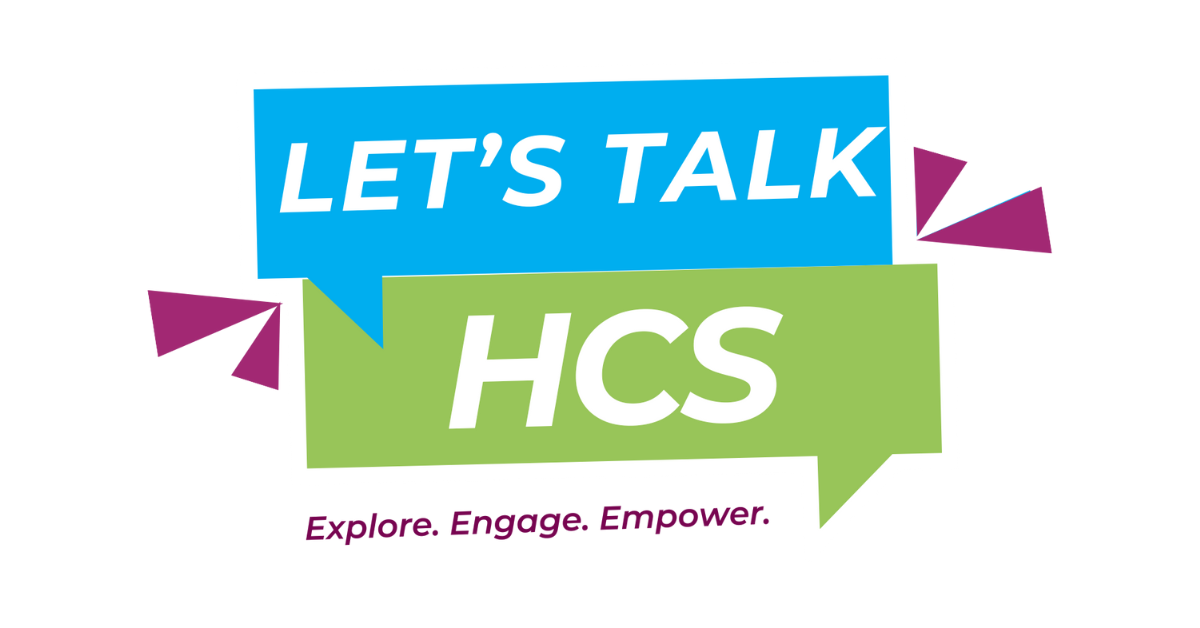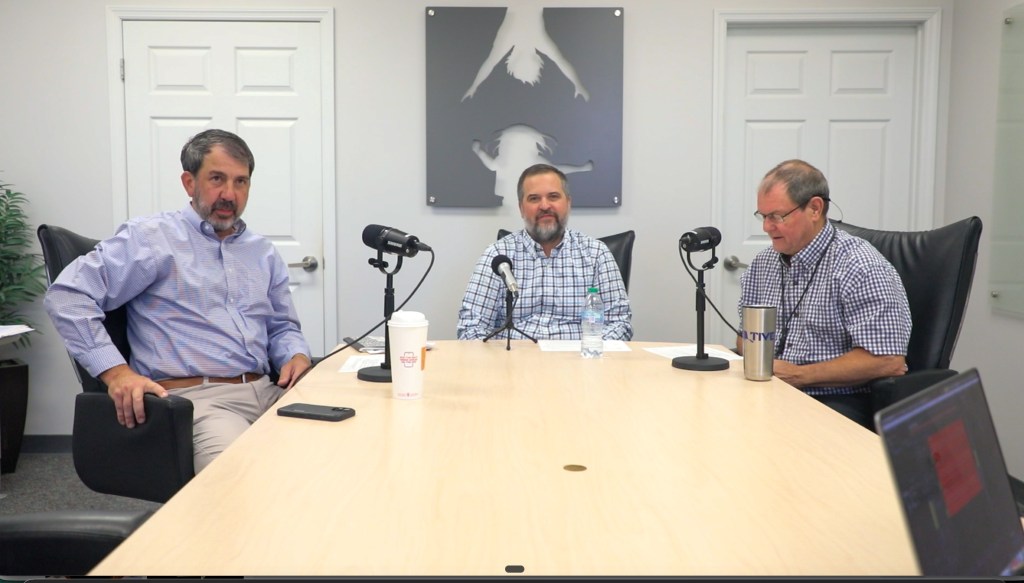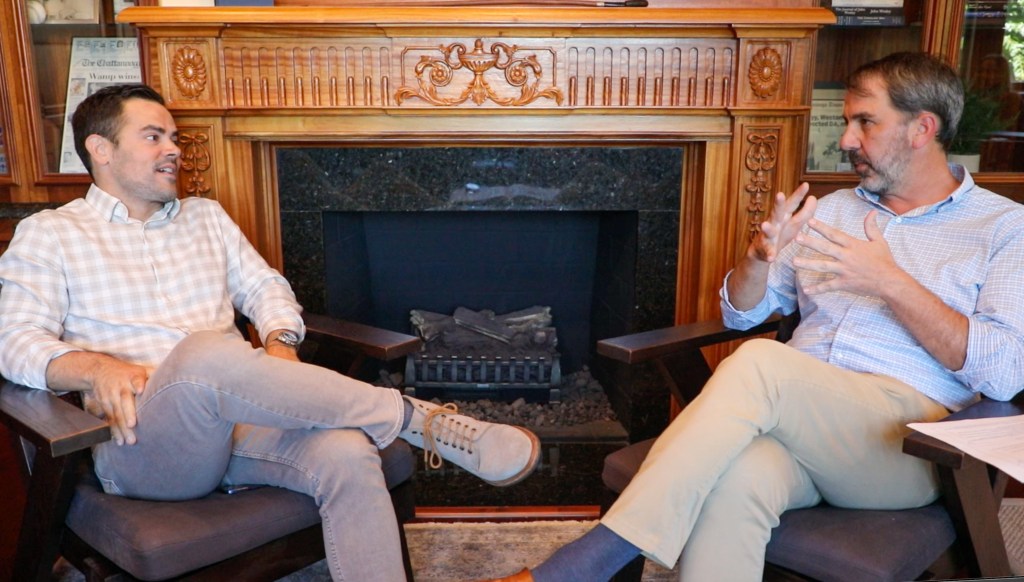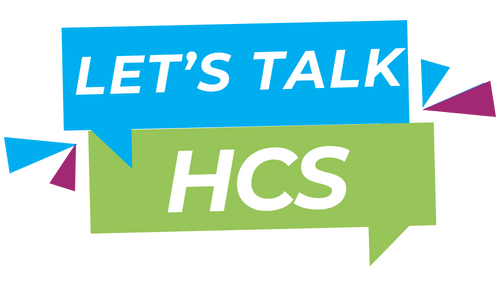Building for the Future
September 18, 2025 – Facilities Shape Learning
The latest episode of Let’s Talk HCS takes listeners behind the scenes of Hamilton County Schools’ facilities work, showing how thoughtful planning and smart investments are shaping the student experience. Superintendent, Dr. Justin Robertson, sat down with Board Member Gary Kuehn and Director of Facilities Justin Witt to explore the challenges and vision behind maintaining more than 80 schools across 500 square miles.
Board Member Kuehn opened the conversation by reflecting on his career, which began in 1982 at East Ridge Junior High. He later served as principal at Hunter Middle and Hamilton County Adult High School. Throughout his years in education, Kuehn observed how the quality of a building could impact school pride and student behavior. “They just had a different level of belonging to the building,” he said.
“They just had a different level of belonging to the building.”
Justin Witt, who has been with the district for 17 years, described the complexity of managing 7.9 million square feet of space with a small team. “We have everything from window air conditioners to geothermal systems,” he explained. With only two roofers and six plumbers on staff, his department covers an enormous area and a wide range of needs. Despite those challenges, Witt credited his team for their dedication, saying this year’s smooth start to school was a reflection of their hard work over the summer.
The discussion also highlighted how design impacts learning. Both he and Kuehn agreed that modern, well-designed spaces help students and staff feel valued and motivated.
A major part of the conversation focused on the district’s $260 million bond initiative, the largest facilities investment in the history of Hamilton County Schools. Witt called it a “shot in the arm” that allowed long-overdue projects to move forward. Kuehn emphasized that the improvements reach beyond academics. The improvements extended to athletics and community spaces as well. “Many different schools have benefited from this in ways that are a big part of keeping our kids in public schools,” he said.
“Many different schools have benefited from this in ways that are a big part of keeping our kids in public schools.”
Later in the episode, Mayor Weston Wamp joined the conversation to share his personal connection to design. “I grew up in a family of architects,” Wamp said, explaining that he spent much of his childhood on school construction sites. He recalled watching new buildings like Allen Elementary and Red Bank Elementary take shape under his grandfather’s direction. “He cared so much about how teachers would be able to teach in schools,” Wamp said.
For Wamp, school facilities are more than functional spaces. He also believed they send a message to the community. “I take my job and myself more seriously when I walk in here,” he said, referencing his own office as an example of how environment affects mindset. “I think the same is true for the lived environment that we give to teachers and kids.”
Wamp reflected on the decision early in his administration to move forward with Tyner Academy, even when the project exceeded its budget projections. “We’re not going to make cuts,” he recalled. “We’re going to figure out how to do this.” His reasoning was rooted in a belief that public investment should match public promises. “You should finish what you start,” he said.
The mayor also shared how he and district leaders planned the $260 million bond initiative with an eye toward accountability. “We talked about demonstrating to the public that the county and the school system could be good stewards of a lot of funds,” Wamp said. His goal is to demonstrate that responsible leadership can foster trust and pave the way for future investments.
As the episode closes, Robertson and Wamp agree that schools are more than buildings.
"Schools are symbols of belief, in students, in educators, and in the community’s shared future."
It is the commitment of Hamilton County Schools that every school will have equitable access to resources such as facilities, technology, and operations that provide for their individual student needs. HCS is all about customizing solutions to provide safe, secure, and functional learning spaces. This means securing schools and campuses through improved lighting systems, video monitoring, hardened entrances and common spaces, as well as professionally trained security personnel.





